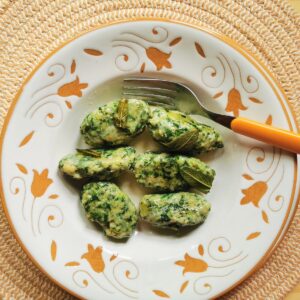Strangolapreti are delicious Italian spinach and bread gnocchi (dumplings) traditional in Eastern Lombardy and Trentino-Alto Adige. Made with bread, spinach, eggs and cheese or flour, strangolapreti are usually served in a simple sage and butter sauce. So tasty and comforting, these dumplings are a super way to use up leftover stale bread.
History and origins.
These Northern Italian spinach and bread gnocchi are said to date back to at least the 14th century. Also known as ‘strozzapreti’, you can find similarly named gnocchi in Corsica and Naples. In addition, Italy also has a type of flour and water pasta called strozzapreti or strangolapreti, which is traditional in Central and Southern regions.
The names ‘strangolapreti’ and ‘strozzapreti’ both translate to priest chokers or stranglers. Since, both names are used in different parts of Italy, it seems that they were inspired by a certain animosity towards the clergy throughout the country, particularly among the peasant population.
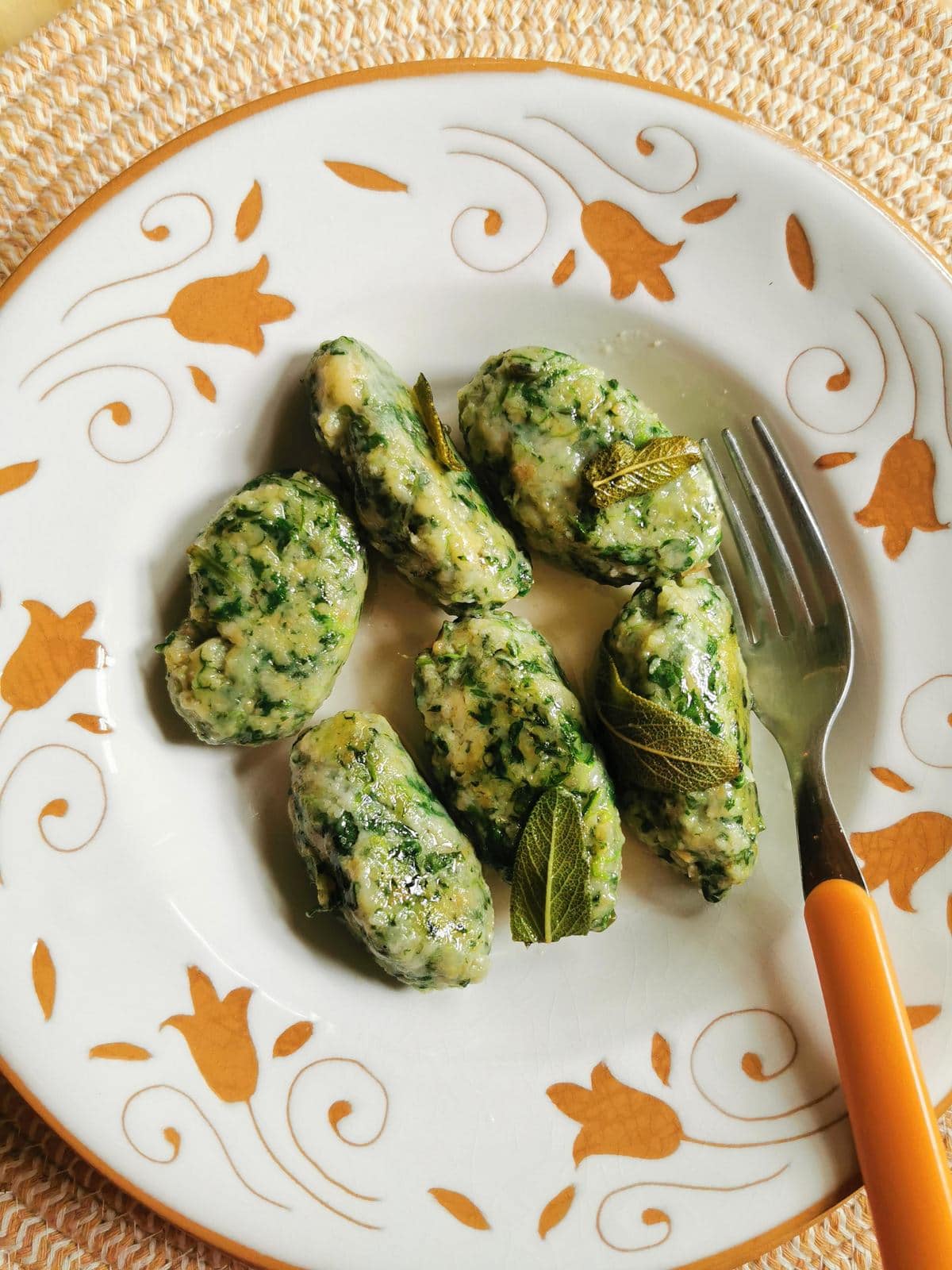

As far back as the Middle Ages, much of Italy’s rural population were sharecroppers who, under a system known as Mezzadria, had to give up half of their crops and produce to the landowners. Not only, was much of the land owned by the Church, but the priests had a reputation for taking more than their fair share of the farm produce (crops, eggs, chickens, vegetables, cattle).
Many farming families were large and included grandparents, parents and children. Having to live off only half the farm’s production was difficult, and these people struggled to cope. It’s probably from this that anti-clerical pasta names were born!
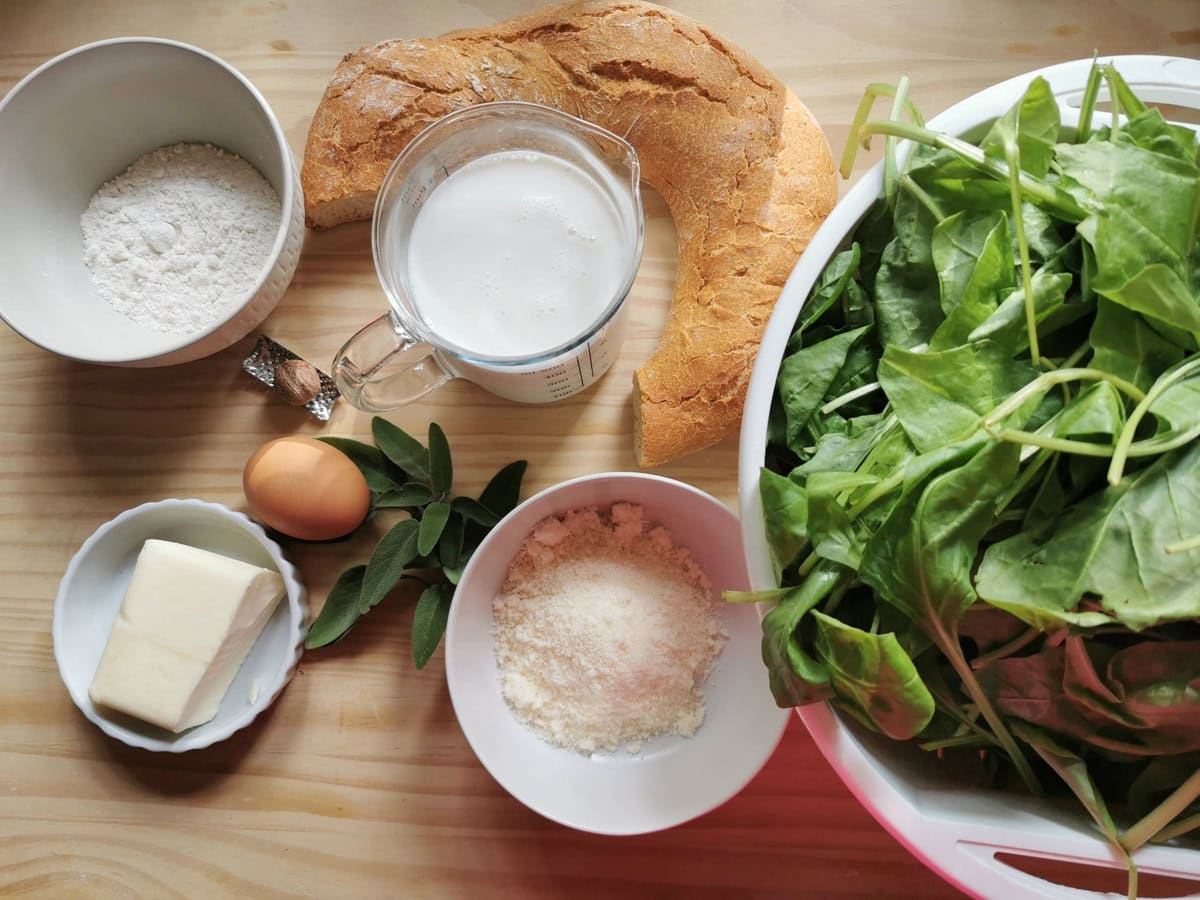

Different types of strangolapreti gnocchi.
As I mentioned above these spinach and bread gnocchi called strangolapreti come from Eastern Lombardy and Trentino-Alto Adige. Although the two recipes are basically the same, there is a slight difference in the ingredients used.
I based this recipe on one I found on a site called BuonaLombardia. This is a portal published by the Lombardy region with information about local wines, produce, and places to visit, as well as some traditional recipes.
Strangolapreti from Trentino- Alto Adige are slightly different to these from Lombardy because they often include cooked onion, sautéed spinach and cheese in the gnocchi mixture. However, different versions do exist in both Trentino and Lombardy.


Ingredients, tips and substitutions.
Bread: Traditionally, strangolapreti are made from stale country bread that has been cut into small cubes and soaked in milk. Some people use breadcrumbs (homemade or store bought). Although I haven’t made spinach gnocchi with breadcrumbs, I have another recipe for bread gnocchi from Umbria that uses breadcrumbs. So, I think they can be included in this recipe too.
Milk: I used organic whole milk, but lower fat milk should be fine instead.
Spinach: Italians usually use fresh spinach or erbette for this recipe. The latter, also known as perpetual spinach or spinach beet, is a type of chard that’s actually available all year round here in Italy. It also tastes very similar to spinach. I used erbette but you can use either, or even Swiss chard or beet greens (both without the stems).


Flour: This recipe calls for Italian ‘00’ fine soft wheat flour. You can also use plain or all-purpose flour. It’s important to avoid adding too much flour as the strangolapreti may become heavy.
Nutmeg: Italians use a lot of nutmeg, in both sweet and savory recipes. This spice adds a lovely slightly sweet, nutty flavor. Freshly grated is best.
Eggs: I used 1 large organic egg, yolk only. Use 2 if your eggs are small.
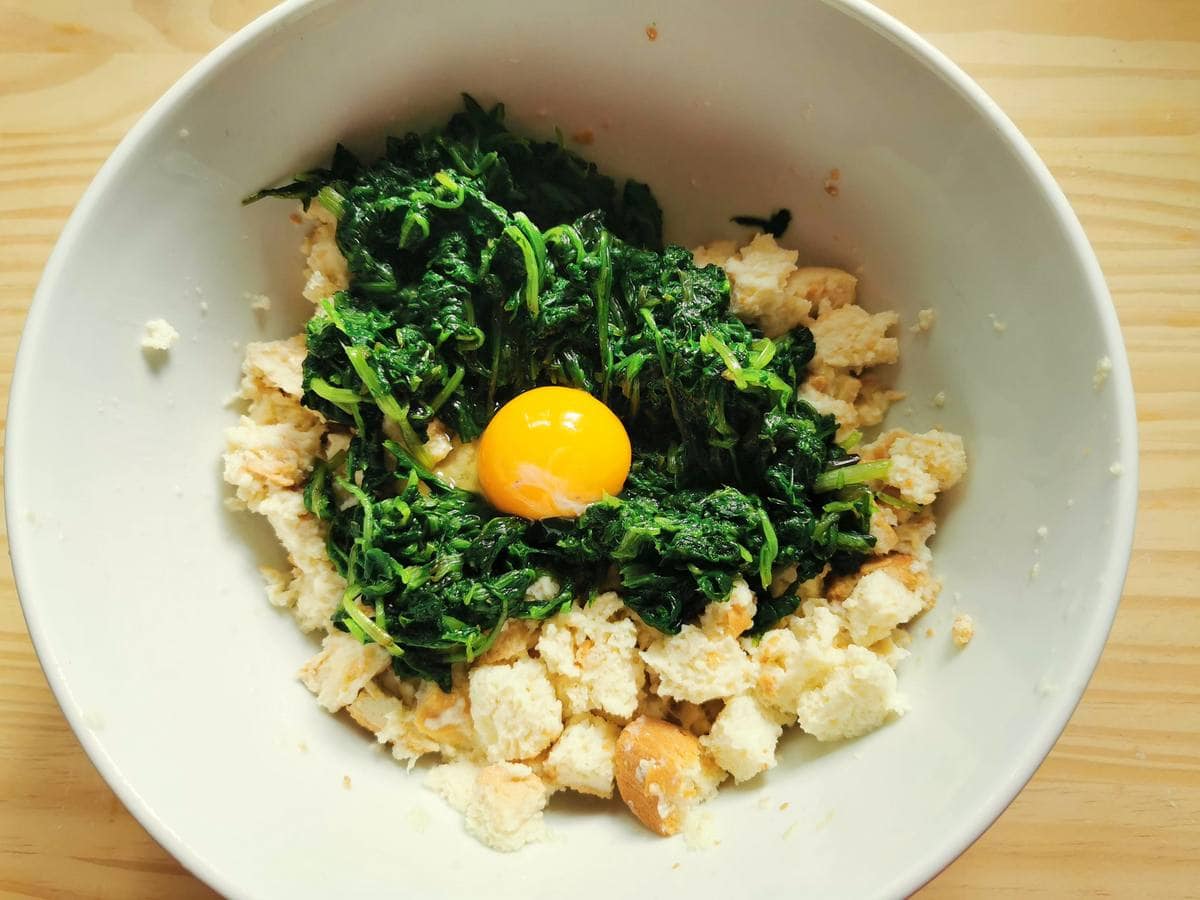

Step by step instructions.
First, cut the stale bread into small cubes, place it in a bowl with the milk. Mix well and leave to soak for at least an hour.
Next, place a large frying pan or pan over a high heat and add the washed spinach or erbette with just a sprinkle of water. Cover with a lid for a couple of minutes whilst it wilts. Use a wooden spoon or tongs to stir the greens until all the leaves are wilted.
Then, transfer the greens to a sieve to drain and cool. Use your hands to squeeze out as much liquid as possible and then chop finely.
Cook’s tip: I often squeeze the spinach in a tea towel to remove the liquid.
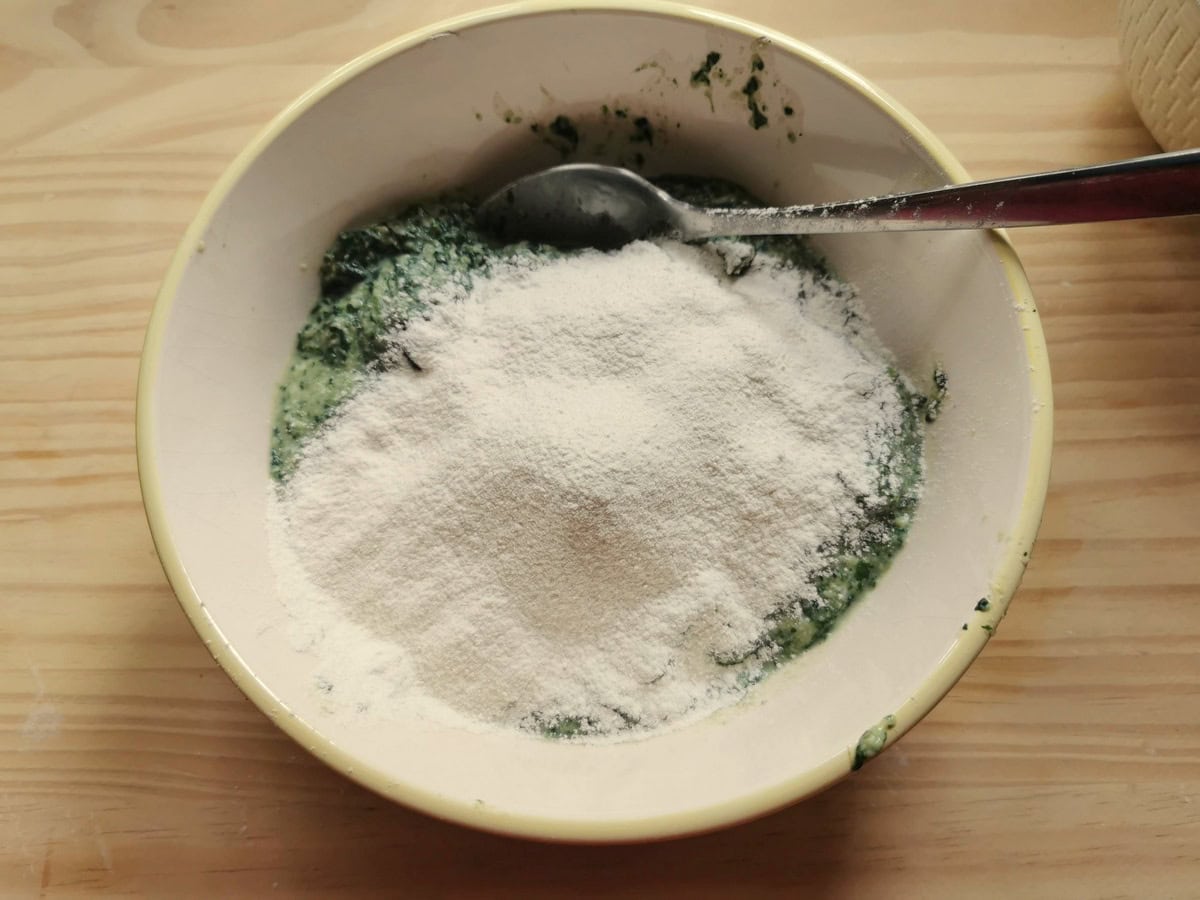

Squeeze the bread to remove any access milk (it will have probably absorbed most of it) and put the bread in a bowl with the spinach, egg yolk, nutmeg, and mix well. Use an immersion blender to create a rough purée.
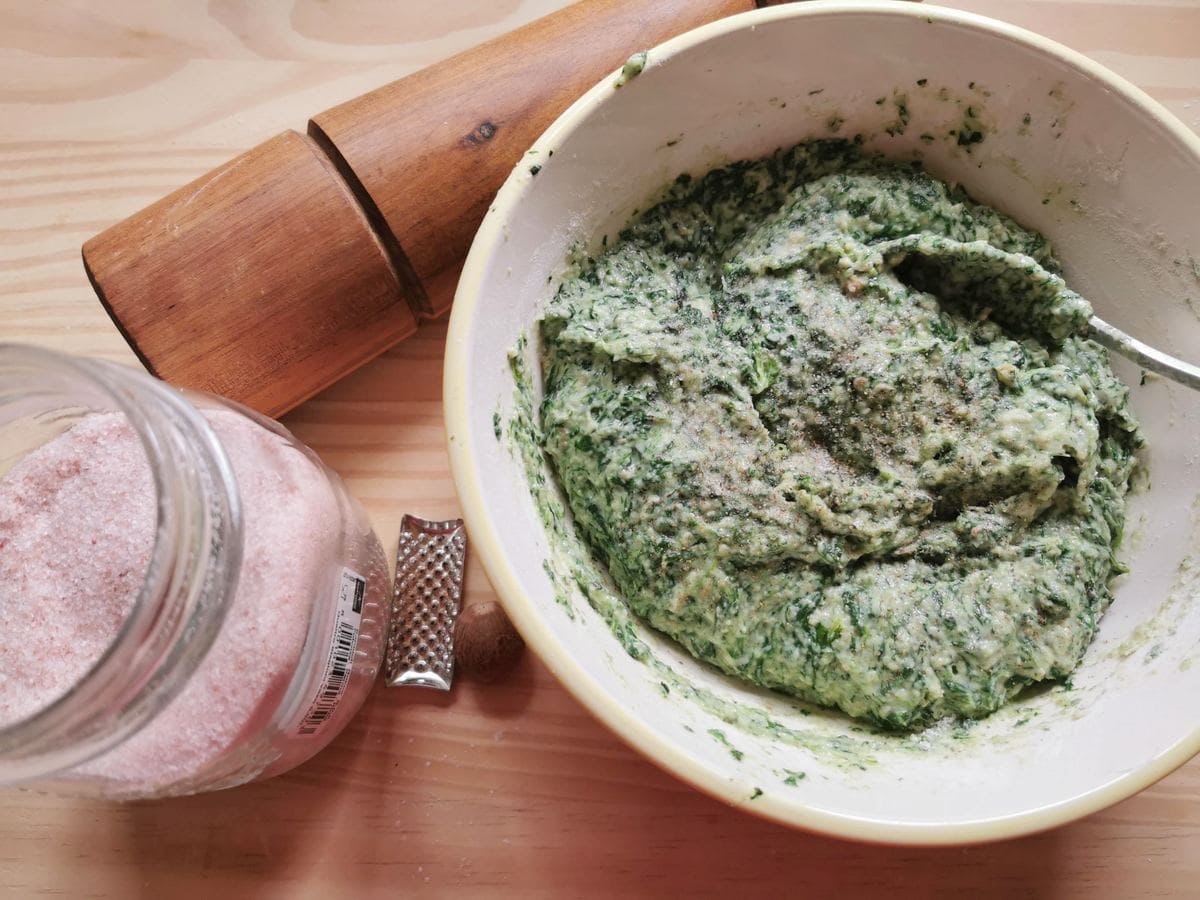

Add the flour bit by bit and continue mixing until the mixture starts to dry up and forms a dough. The mixture should be sticky but easy to shape with wet hands. Finally add salt, pepper and nutmeg.
Take a small tablespoon of the gnocchi dough and shape it into a ball or cylinder. Place the ready strangolapreti on a tray covered with oven paper and dusted with flour. Repeat with the rest of the mixture.


More tips for success!
Cooks tip: The less flour you use, the lighter and airier the dumplings will be. The mixture should be just stiff enough to roll into the dumpling shapes using oiled or wet hands. Rather than use a lot of flour, you can also add some breadcrumbs instead.
Cooks tip: The dumpling mixture is sticky so wet hands really make it easy to shape them. You’ll need to clean your hands and wet them again a couple of times while shaping them. Alternatively, some olive or other vegetable oil on your hands can prevent the mixture sticking to you.
Cooks tip: To be sure the amount of flour is correct, it’s a good idea to cook a tester gnocchi before making them all. Put one ready dumpling into salted boiling water. It should rise to the top after a minute or two. If it falls apart, then you need to add a little more flour.
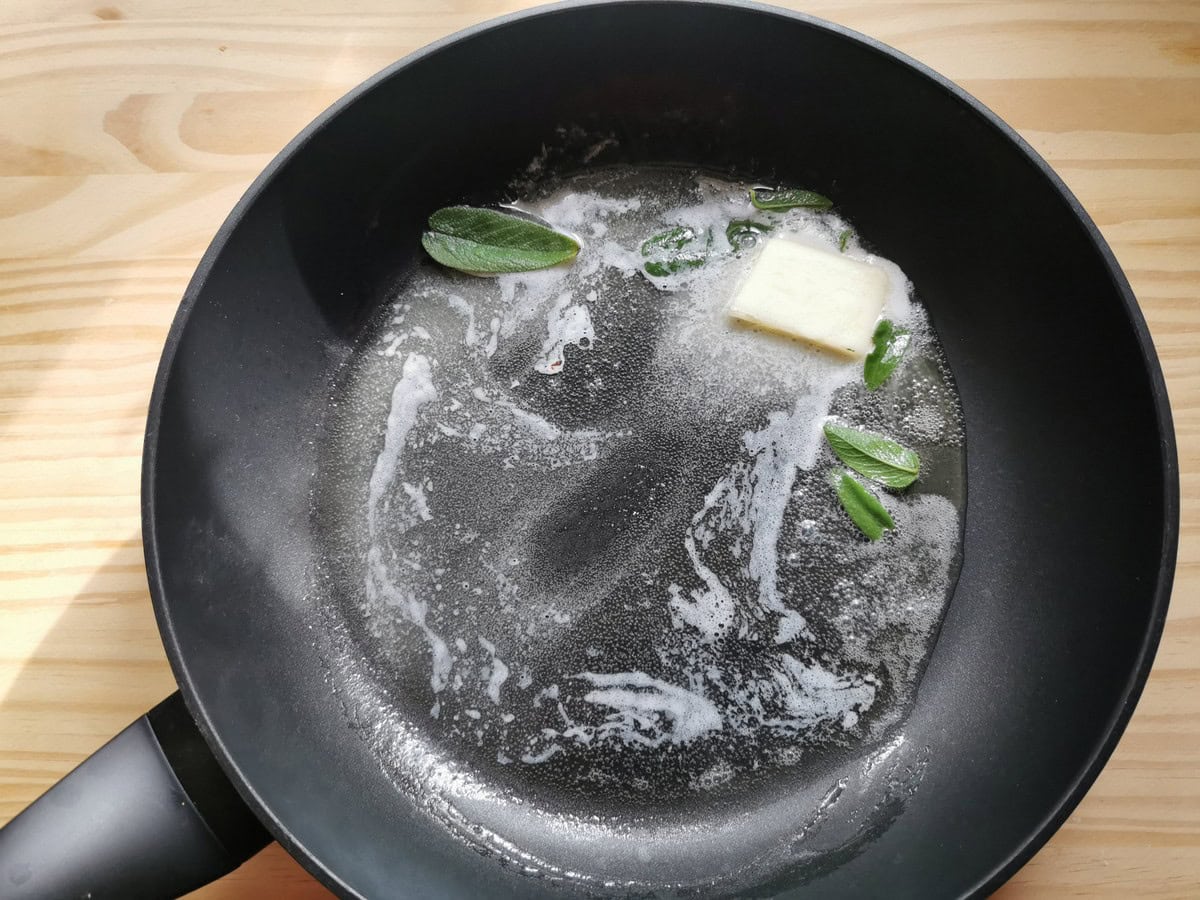

Cook and serve.
Put a pot of water onto boil for the strangolapreti, add salt once it starts to boil and bring to a boil again. While you are waiting for the water to boil, add the butter to a large frying pan over a medium heat. Once the butter melts, add the sage leaves and continue to cook until the sage starts to crisp and the butter turns a little brown.


Cook the bread and spinach gnocchi in the salted boiling water in batches so you don’t overcrowd the pan. They’re cooked once they rise to the surface. Use a slotted spoon to transfer the ready gnocchi to the pan with the butter. Mix gently to coat the dumplings in the butter and then serve warm, with grated Grana Padano if desired.
What to do with leftovers.
You can keep leftover stangolapreti sealed in the fridge for up to 3 days. To reheat either use a microwave, sauté in a pan with more butter or bake in a very hot oven with some butter and cheese for just 5-10 minutes.
This recipe is vegetarian except for the use of Grana Padano when serving. Use a vegetarian cheese instead as Italian Grana and Parmigiano are made with animal rennet.
You can prepare the strangolapreti mixture and keep it sealed in the fridge for 1-2 days. If you want to make the dumplings in advance, only one day ahead is better. Also, place them on a well floured surface so they don’t stick to the plate or tray. Italian semolina flour is best for this.
Pin for later.
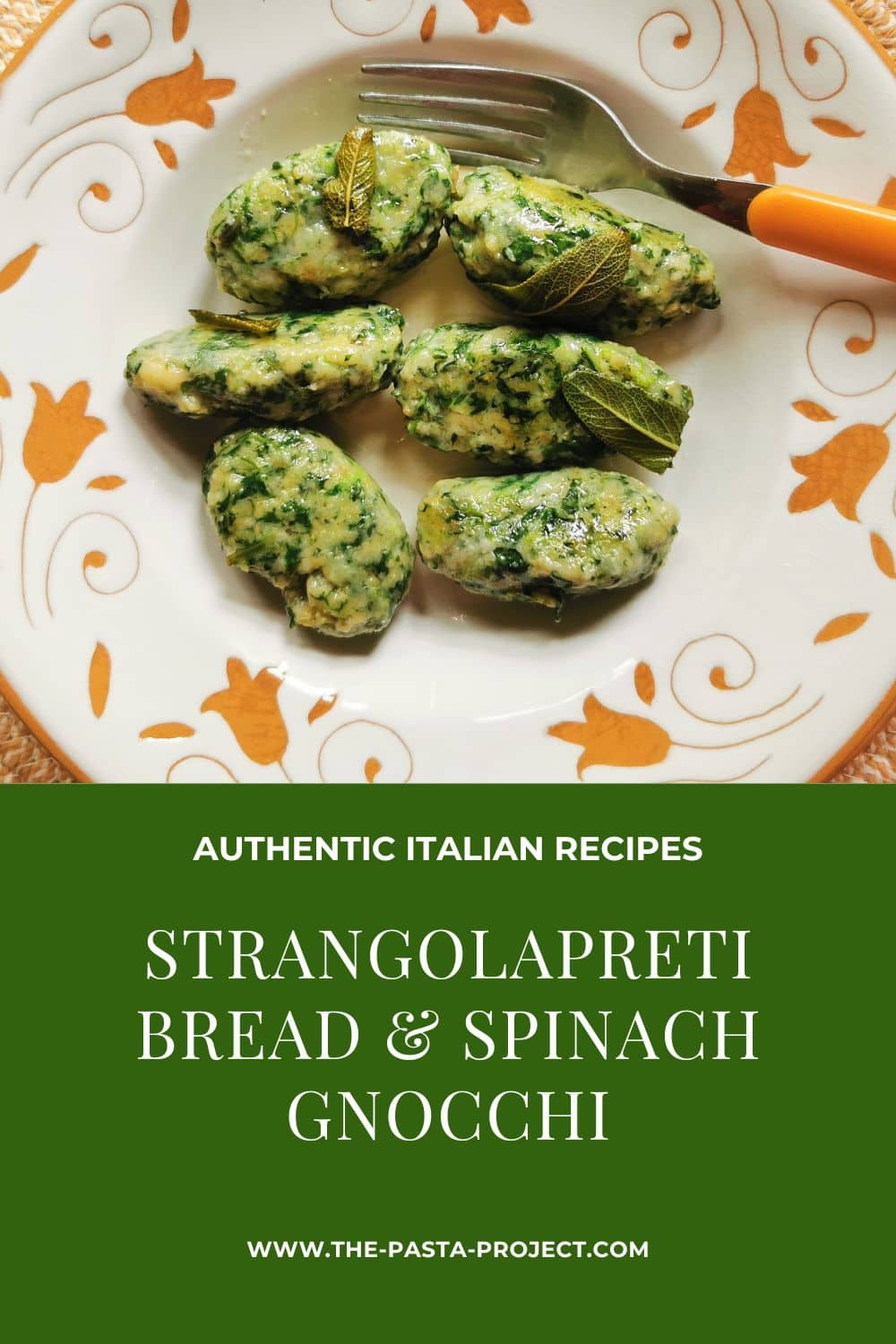

Let me know what you think.
This is a classic and ancient dish from the Italian mountains and a wondeful recipe to bring a taste of Italy to your table. If you do try strangolapreti gnocchi, please let me know what you think! Write a comment here on the blog or post a comment on the Pasta Project Facebook page.
Buon Appetito and all the best from Verona, Italy.
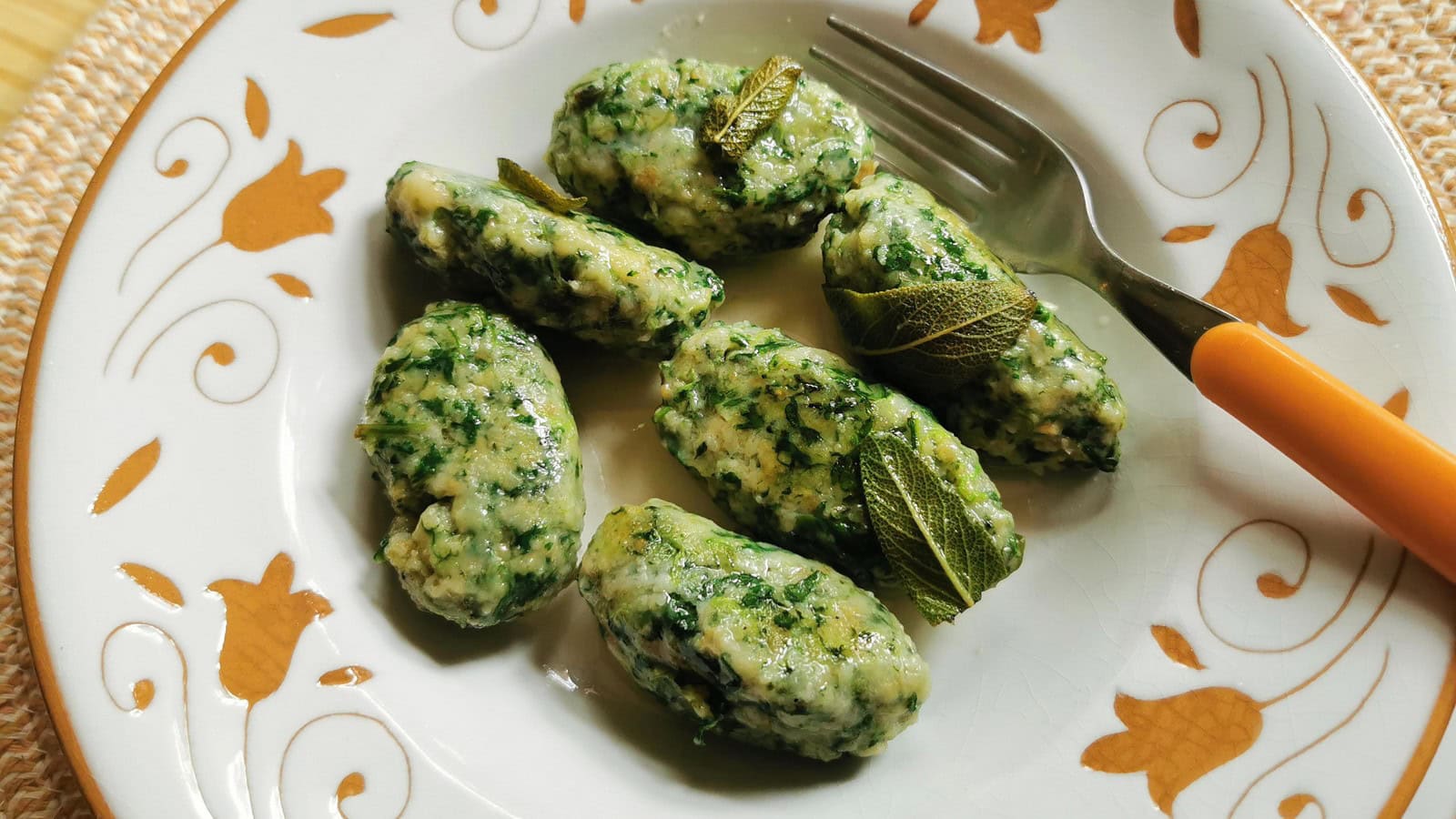

Other gnocchi recipes worth trying.
8 different types of Italian gnocchi.
Reader Interactions

